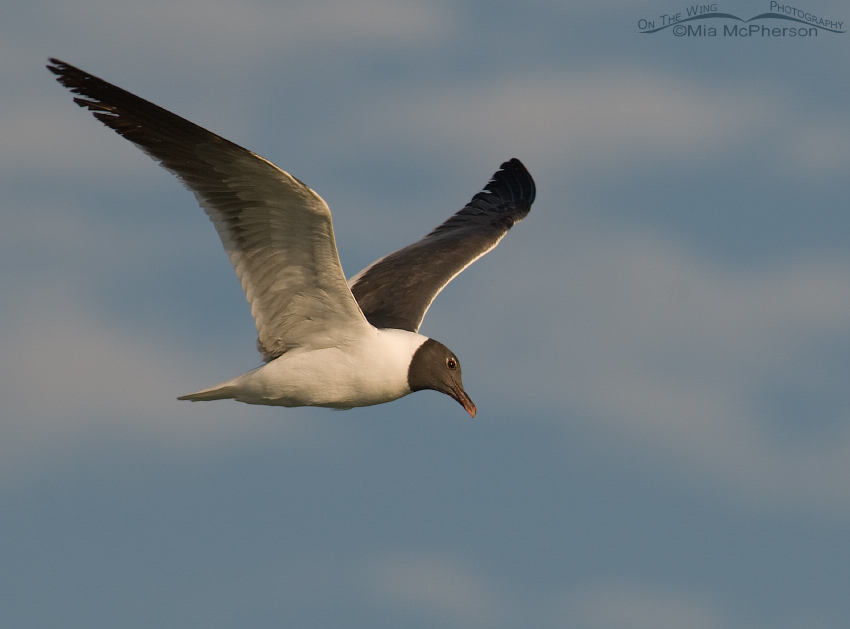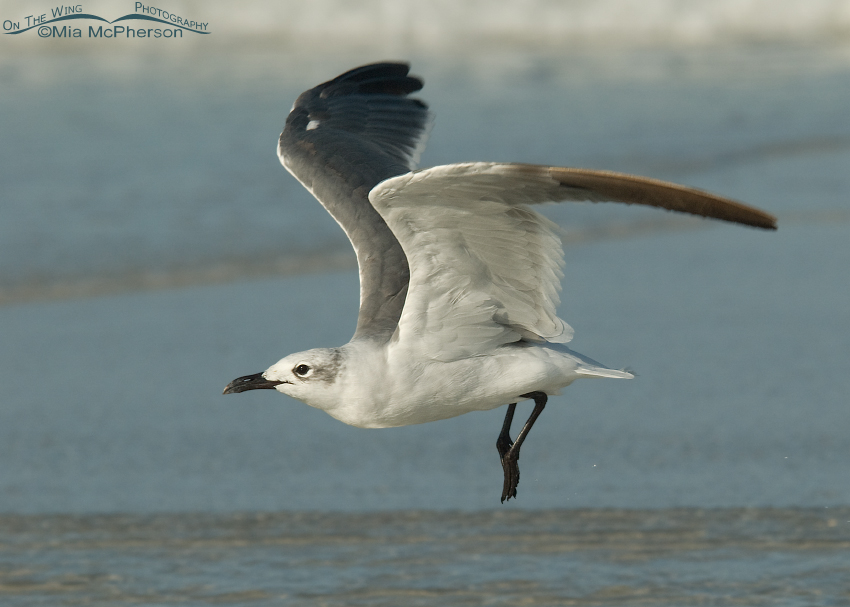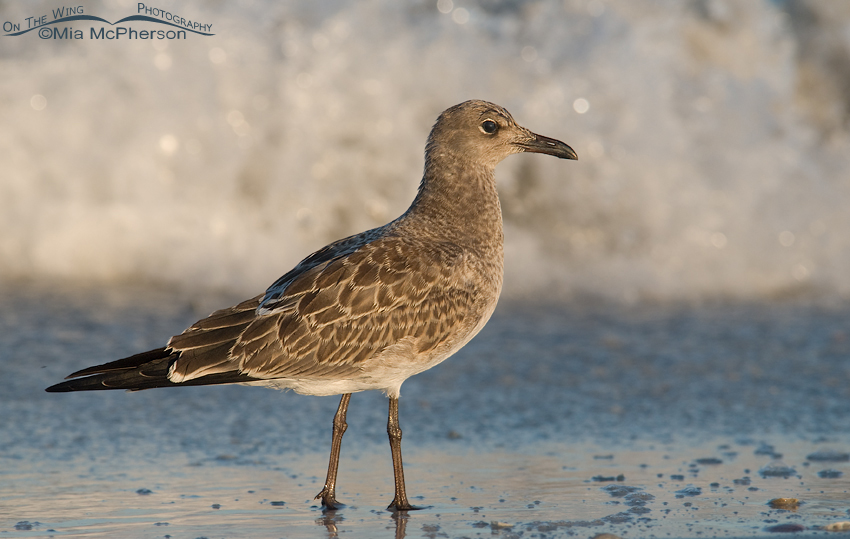 Adult Laughing Gull in breeding plumage – Nikon D200, handheld, f7.1, 1/800, ISO 200, Nikkor 80-400mm VR at 400mm, natural light, not baited
Adult Laughing Gull in breeding plumage – Nikon D200, handheld, f7.1, 1/800, ISO 200, Nikkor 80-400mm VR at 400mm, natural light, not baited
Laughing Gulls are commonly seen at Fort De Soto County Park but novices to birding and bird watching might think they are three different kinds of gulls depending on their age and plumage. The Laughing Gull in the image above flying over the Gulf of Mexico is an adult in breeding plumage.
 Laughing Gull in nonbreeding plumage – Nikon D200, handheld, f7.1, 1/1600, ISO 320, Nikkor 80-400mm VR at 220mm, natural light, not baited
Laughing Gull in nonbreeding plumage – Nikon D200, handheld, f7.1, 1/1600, ISO 320, Nikkor 80-400mm VR at 220mm, natural light, not baited
The Laughing Gull in this image looks quite different but is also an adult shown in nonbreeding plumage. This bird lacks the dark hood and reddish bill that a Laughing Gull shows in breeding plumage.
 Juvenile Laughing Gull – Nikon D200, handheld, f7.1, 1/350, ISO 250, Nikkor 80-400mm VR at 310mm, natural light, not baited
Juvenile Laughing Gull – Nikon D200, handheld, f7.1, 1/350, ISO 250, Nikkor 80-400mm VR at 310mm, natural light, not baited
This last image shows a juvenile Laughing Gull which in size, shape and form looks just like the adult Laughing Gulls but the plumage is quite different in color and pattern. It can be even more confusing because juvenile Laughing Gulls in 1st winter, 1st summer and 2nd winter also exhibit differences in plumage.
Laughing Gulls may have been common for me to see in Florida but here in Utah seeing one would be considered rare.
Life is good.
Mia
Click here to see more of my Laughing Gull photos plus facts and information about this species.


I saw my first black headed gulls at Malheur WR in Oregon this past week. I’m betting they were Franklin’s though. Pretty as gulls go.
Gulls are challenging for those of us who don’t have the variety you do, so interesting to see the 3 stages of this one so well illustrated.
that’s so amazing that they can change that much … beautiful images!!
I love those gulls. They are such unique looking birds in both the Juvenile and and Adult plumage. Wonderful shots!
Gorgeous images – and love the name.
I am endlessly fascinated by the changes in plumage with maturity, sex, season. I believe that the first people to see King Penguins in their first moult (when they look to be wearing duffle coats) were convinced that the fledglings were a new species. Unsurprising.
Hi Mia,
Reading your posts is a highlight in my day!
Each one is brief, yet amazingly informative.
And your photography is stunning.
As always, thanks.
Mary
I would never have known these were NOT three different kinds of gulls! I’d recognize the juvenile as a young bird, but as for ID-ing the other images as the same kind…no way. Very interesting…Thanks!
Nice one Mia, brilliant photography.
Beautiful birds, excellent photos!
Wonderful captures!